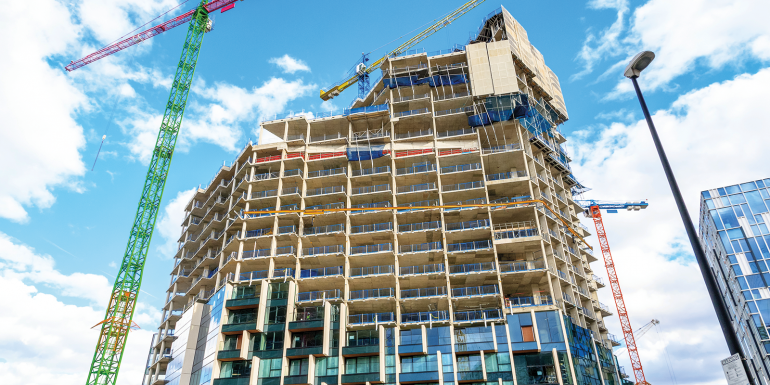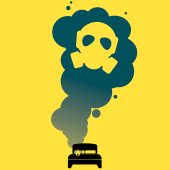Sea change

Elaine Knutt notes how, post Grenfell, the construction industry’s business as usual attitude has been washed away leaving an earnest desire to improve – but uncertainty about how to do so.
It’s nearly three years since the Grenfell fire ripped through the certainties of the construction industry, undermining the widely held view that the UK industry delivered homes, public buildings and commercial projects that were second to none. These three years have also seen waves of reforms, consultations and working group reports washing over the sector, with the incoming tides leaving a re-shaped landscape populated by third-party assurance schemes, British and international standards, industry guidance and an impending new regulatory regime.
Uncertainty over exactly which aspects of the industry had to be fixed has led to multiple reforms. As well as the new regulatory regime for Higher Risk Residential Buildings (HRRBs), the working groups of the Industry Response Group review addressed deficiencies in 12 different areas; a new Fire Safety Bill will extend responsibilities under the current Regulatory Reform Fire Safety Order; and a new, interim version of Approved Document B is to be superseded by further editions. It’s hardly surprising if many feel that the seismic shock of the Grenfell fire has been followed by multiple mini-shockwaves.
But in those three years, hundreds of projects have moved from concept sketch to handover, and from outline specification to completed building. Have they evolved differently in the post-Grenfell climate? Have they found their way through the ever-changing requirements on fire safety, sprinklers and cladding? Or are they still trundling along the rutted tracks that led to the Grenfell tragedy?
Conservative attitude to risk
Many feel that in the post-Grenfell period, the thirst for innovation once shared by many designers, architects and engineers has given way to a concentration on doing the basics well. Bobby Chakravarthy, a partner at Arcus Consulting and a former President of the Association for Project Safety, says: “Clients and contractors are now proactively dealing with fire risk management and putting lots of emphasis on design – that’s a positive factor. But we haven’t seen innovation coming to the fore in the fire risk sector; people are still not sure even on specifying mist suppression systems. In general, there’s a reluctance to move away from traditional methods.”
Trade associations can do a lot to help improve understanding of the way in which sophisticated products and systems work, and how to ensure they are specified and installed correctly. The Smoke Control Association (SCA) was set up to promote the UK smoke control industry, with membership open to companies involved in the design, manufacture, supply, and service and maintenance of certified smoke control equipment and systems. These are complex systems, with smoke control projects often using sensor-driven intelligent controls in support of the Building’s Management System (BMS) to control air pressurisation and assist in managing smoke. In operation, the BMS allows floors of a building to be pressurised by opening or closing grilles, vents or deploying mechanical fans, via sensors, to control the path of the smoke. Dependent on the building design, this can direct smoke through a smoke shaft away from the stairwell or atrium, while allowing the building stairwells to remain clear of smoke.
Independent testing
SCA Technical Consultant Allan Hurdle notes that while there’s little in the way of new products or systems on the market, the big change is that both installers and manufacturers of smoke control products now have to be certified as competent and compliant with Approved Document B of the Building Regulations, and the relevant British Standards and ISO standards. This relates to products such as: mechanical smoke removal fans; passive vent products such as louvres or flap ventilators; jet fan systems for car parks; fire dampers; smoke dampers; intelligent controls and smoke removal motor drives. “Previously we’d see statements such as ‘manufactured in accordance with’ but not necessarily independently tested. To be sure that they will work, products have to be independently tested to work at high fire temperatures and all need independent certification when products are fitted.”
Jim Mann CFIFireE, CMIOSH, a Glasgow-based Fire Engineer and Director at Crisis Management Advisory – a practice operating in both the Scottish and English regulatory systems – says the project teams are now discussing issues that would previously have been passed over. “In the past,” says Mann, “people might have mentioned compartmentation, but now there’s a better understanding of the importance of compartmentation by sub-dividing the buildings into fire-tight compartments, utilising passive fire protection measures such as the correct-rated fire doors for the risk and the correct installation of the appropriate level of fire stopping. The correct installation of all fire safety measures is paramount; and once installed, occupiers have the responsibility to ensure such measures continue to be fit for purpose throughout the lifetime of the building.”
Mann, who plays an active role in the Institution of Fire Engineers, says the adoption of sophisticated sensor-based systems for detecting fire and smoke is advancing – albeit cautiously. That the new technical systems available are becoming more widely used is to be welcomed, as long as they’re tested to qualitative standards. “As a fire engineer advising design teams, it’s about having confidence these systems are robust and that they can be maintained and operated over the life of the building.”
Digital transformation
Andrew Taylor, Technical Officer at the Association for Specialist Fire Protection, has also encountered a shift in attitude. “Previously people would install something and think, ‘I don’t know if that’s right, but no-one will check’. Now, there is more scrutiny. People are giving passive fire protection measures more attention.” He notes that designers, contractors and building control may have been unaware of the risks of an ill-conceived firestop, for example. He
believes that now that isn’t the case, but there is an uncertainty about the specifics of what they should be doing about it.
Digital technologies, it seems, are coming into their own. “The main contractor now wants to see full records of all inspections, quality reports and underpinning certification/technical evaluations,” Taylor says, and this has driven the development of smart device apps to record every stage of installation of passive fire protection products. For a fire-stopping installation, for example, photographs are taken at every stage of the process, from the cutting of the hole or penetration right the way through to the completed seal. Once the seal is complete, it is given a unique reference, typically on a label with a QR code, and a final photograph is taken. A data-file with the pictorial history and the underpinning certification can then be provided to the main contractor, and ultimately to the end client.
However, greater emphasis on creating a digital paper trail hasn’t necessarily led to greater cohesion within project teams. Taylor feels that, instead, awareness of the need for third-party checks and certification has served to emphasise the boundaries of each party’s contractual responsibilities.
“Understandably, the construction industry has become more risk aware, and consequentially risk averse. Rather than everyone working together to make sure the right thing is built, the focus is often on parties making sure they don’t incur additional responsibilities and consequent liabilities.”
Dennis Davis is Executive Officer of the Fire Sector Federation – which brings together representatives from major stakeholders across the UK fire sector, including trade and professional associations, and public and private enterprises – and he notes that scrutiny falls on contractors, subcontractors and installers. “People might know you’re a good company, but now they need to know you’re actually meeting some kind of standard; that someone else is looking over your shoulder. That’s part of the legacy of Grenfell – people are looking for assurance and a backstop that things have been done properly.”
Stalled technical innovation
Manufacturers are less inclined to bring new products to the market, instead focusing on technical testing and certification of their existing catalogues. At Arcus Consulting, Chakravarthy says: “The CPA and the BRE are looking at how to approve products… everyone is waiting to see how it pans out. People are using products that are tried and tested – and trying to cover themselves from an insurance point of view.”
At the Fire Sector Federation, Davis agrees that rising expectations on competence and compliance brings a challenge: how do you innovate or push the limits of what’s possible without invalidating product warranties or professional indemnity policies?
“[The need for third-party assurance] drives you towards established standards and principles that could make it difficult to innovate. So that’s a challenge for the industry – to innovate and bring regulation and controls and standards forward at the same pace.”
There are some notable exceptions. At the SCA, Hurdle has identified one area of innovation as non-combustible breather membranes. Approved Document B sets a blanket expectation that products used in the external envelope for buildings above 11m – which may include concrete blocks, mineral wool insulation with a vertical breather and waterproof membrane – must be non-combustible and meet the Class A2 standard. It also provides a list of exemptions where it was thought that no A2-rated products were available.
“Previously, Approved Document B only identified a class B or E combustibility rating of vertical membranes. Now new membrane products are available to a Class A2 S1 D0 rating. It’s a major change to find new class A2 vertical membrane to support the outside façade that creates a complete non-combustible envelope,” he says.
Paul Bussey RIBA FIIRSM, FIFireE Senior Technical Consultant and Fire and CDM Lead at architectural practice Allford Hall Monaghan Morris, agrees that product manufacturers are now marketing technically improved products for buildings’ external envelopes, such as vapour barriers, breather membrane, cladding components, as well as structural framing systems while developing better construction details between the frame and the slab, or the frame and the rainscreen cladding from a fire-stopping and compartmentation perspective.
However, while individual components may meet all necessary certifications and standards, projects typically specify systems comprising several components – leading to a contractual grey area between fire designers, architects and specialist sub-contractors over who can, or should, sign-off the systems as compliant with the requirements of Approved Document B.
“Architects cannot say, hand on heart, that an external wall cladding system will meet all the criteria without industry approved testing, which will add considerable costs. Materials are often specified on a performance basis and not prescriptively, so the actual proprietary product adjacencies can be a contractor decision. Yet materials can sometimes work in opposition to each other, and that hasn’t been well explored. Building control surveyors often don’t know what to approve, and we find that fire engineers sometimes don’t want to give an opinion, they just state performance requirements,” says Bussey.
The lack of clarity in this area seems to be where the problems start. “Products tend to be tested as stand-alone items, but there are interfaces between various construction systems and these do not have recognised test standards. It is impossible to test every permutation and combination, so interfaces have to be designed and evaluated. But who does these technical evaluations?” asks ASFP’s Taylor.
Even the technical evaluations are coming under scrutiny. The ASFP recommends following the Passive Fire Protection Forum (PFPF) Guide to Undertaking Technical Assessments. It is also gathering evidence on how steel frames interact with dry-lining board systems from a fire safety point of view in order to issue further guidance.
The gods of finance
Clients sit at the top of the contractual tree, but above them are the banks, building societies and project financiers now playing a key role in shaping projects. Increasingly, funding is contingent on the financers having a full paper trail, supplemented with a digital and photographic trail, as described by Taylor. With contractual mandates running ahead of regulations, the pressure from the top is directing them towards tried-and-tested solutions that do not strain at the limits or warranties.
For some design teams, that expectation has been crystallised in the EWS1 External Wall Review form, required by the RICS working in conjunction with the Building Societies Association and UK Finance. Design teams are being asked to fill this out in relation to completed buildings when they change hands, or when a mortgage is sought. The form questions architects on the materials and systems used, and many owners have seen sales disrupted or cancelled following investigation – even when the design teams are confident that the buildings were compliant with the Building Regulations of the time.
As the Fire Sector Federation’s Davis comments: “There is a clearer understanding of the relationship between finance, mortgages and insurance, and how the project hangs together. Unless you are following defined, understood, acceptable standards, the chances of seeing funding finance or a mortgage is less. That’s also helping to drive the notion of third-party certification and assurances.”
Insurance companies providing professional indemnity (PI) insurance are also conducting retrospective investigations, with design teams finding these are followed by demands for higher premiums. According to Chakravarthy: “Professional indemnity insurance for designers has gone through the roof if you’re dealing with HRRBs.” In order to pre-qualify for new appointments, architects and designers are required to carry insurance cover to offset any future liability claims arising from their completed buildings. This normally stretches over
10 years of latent defects liability, but can extend up to 15 years. He anticipates that the insurance sector is likely to draw comfort from the new regime under the Building Safety Regulator once it is in place.
Bussey warns that the burden of heavy PI Insurance premiums could, in future, reduce the pool of architects and fire engineers able to work on HRRBs. It’s now prohibitively expensive for architects to cover their back catalogue and their forward programme. There could be a situation where a large number of architects just can’t get PI insurance [to design HRRBs] – and the wheels of construction projects start grinding to a halt.
Rising preminums
According to a recent report in the Architects Journal, PI premiums started to track upwards after the Grenfell fire in 2017, but accelerated after a series of non-fatal, but devastating fires in summer 2019. Insurers’ anxieties grew from cladding and the external envelope to timber-framed buildings – and modern methods of construction in general. However, Architect Roger Hawkins, Chair of the RIBA’s in-house insurance company, told the AJ that the premium increases in part corrected a 10-year period when premiums had been driven down to unsustainable levels.
As for the overall implications for project costs, Chakravarthy says they can be considerable: “Sprinkler systems add additional cost, and limiting material selection to classified materials might add up to an additional 15-20% on HRRBs. Where there are efforts to reduce fire risk, costs will go up, there is a direct relationship. The way you specify has changed – we are seeing less value engineering.” He also adds that design teams’ apprehension in using new systems means the cost of new technologies is not dropping as a result of wider adoption.
Bussey, however, takes a slightly different view. “Yes, sprinklers increase costs, but only because we were saving these costs previously – do we want to perpetuate these issues? All we’ve done is saved money in the past by not having sprinklers, so we’ve now changed the context of the question. We also know that many contractors aren’t used to building to a high standard of compartmentation, so contractors will have to up their game and that will require more supervision on site. Again, these are factors that have been relaxed historically, so saving costs, and need to change going forward.”
Study found the sprinklers were 94% operationally reliable and effective in 99% of cases
Passive/active fire systems
Sprinkler systems were once seen as a potentially fallible, disruptive and occasionally disastrous option in a world where passive measures – such as fire compartmentation, smoke dampers and ducting or fire curtains – were considered to offer in-built fire protection. The Grenfell Tower fire raised serious questions as to whether passive measures alone could contain fires, and sprinklers are now firmly in the mainstream of fire safety design and retrofit. In early April, the government signalled that Approved Document B will be updated in May to reduce the trigger height for sprinklers in new residential buildings from its current level of 30m to just 11m.
Retrofits of sprinkler systems are also accelerating, notes Davis, at the Fire Sector Federation. “It started in the social housing market, and now that local authorities have coped with cladding removal, they’re moving into sprinklers, and that’s transferring into the private sector and buildings below 30m.” Take-up has benefitted, he says, from trials that took place pre-Grenfell, in particular a 2011 programme by Sheffield City Council showing that it was cost-effective and practical to retrofit automatic fire sprinklers in occupied, high-rise social housing blocks without disturbing residents. Davis adds that sprinkler installation contractors are increasingly seeking third-party certification for their work, which suggests that clients are in turn looking for reassurance that it’s fitted to appropriate standards.
Terry McDermott is Secretary at the National Fire Sprinkler Network (NFSN), a not-for-profit coalition promoting sprinklers with members including local government bodies and fire and rescue services, as well as fire-related trade associations. He reports a massive increase in sprinkler retrofitting projects since Grenfell, with initiatives in many local authority areas kicked off by the fire and rescue services themselves.
McDermott was formerly Chief Fire Officer at Derbyshire Fire and Rescue Service, and explains how it earmarked £150,000 from its reserves to offer match-funding to local authorities undertaking sprinkler retrofits. Other FRSs around the country took a similar approach. “Pretty much every fire and rescue service has a retro-fitting initiative, and there is also a huge amount going on in London. Then you find that the local authority starts to do it on their own anyway, and they don’t rely on the match-funding anymore. At Derbyshire, we saw it as money well spent – you’re putting it into the homes of the most vulnerable.”
In the months before the Grenfell fire, the NFSN and the National Fire Chiefs Council carried out research on all the known instances of sprinkler deployment in fires in the UK, with data on 2,294 cases gathered. Efficiency and Effectiveness of Sprinkler Systems in the United Kingdom: An Analysis from Fire Service Data sought to answer two questions: had the sprinkler heads been activated correctly, and, if so, had they been effective at controlling the fire? McDermott reports that the study found the sprinklers were operationally reliable in 94% of cases, and effective in 99%. Fears of extensive water damage proved to be an urban myth: in 65% of fires, only one sprinkler head was activated with a further 20% of fires activating two heads.
In terms of costs, McDermott quotes one project that installed sprinklers in new-build single family homes in the social housing sector at just £800 per house. An analysis of retrofitting carried out in the Sheffield project suggests costs per flat averaging between £1,500 and £2,500. “Yes, it adds an additional cost on to a building. But the benefit arises over the entire lifespan of the building, so we think they’re cost effective. The biggest issue is that everyone is talking about high-rise, and we think that if you’re vulnerable in a non-high rise, you could do with sprinklers.”
Balancing act
Bussey comments that the RIBA Expert Panel research on Fire Safety post-Grenfell has uncovered significant dilution of the fire safety regulations over the years by various governments, increasing cost savings disguised as fire-engineered solutions, inadequate fire design training in all disciplines and poor standards of construction often unintentionally encouraged by inadequate contractual arrangements. He believes the construction and design industry and MHCLG should look at themselves and start to rectify these failings rather than wait for the Grenfell Inquiry to name a scapegoat and then continue as before.
“One of the lessons of Grenfell tragedy is that everyone involved in building design, procurement and final installation is responsible,” says Hurdle. Understanding individual responsibility is a key part of the changes in competence testing currently being driven by the 12 industry working groups overseen by the Competence Steering Group and MHCLG. “We have to ensure that everyone understands that ignorance isn’t an escape from liability.
“In the past, buildings may have had a copy/paste job through lack of understanding and competence. We’ve now seen a sea change towards understanding the safety element of buildings – and people are paramount. The building industry is realising they’re not all experts in every aspect of a building from design through to final sign-off.”
At the Fire Sector Federation, Davis says many are starting to address risk and protection differently, going beyond just the legal standards. He suggests that installed alarm and smoke detection systems are often more comprehensive than required by law – extending beyond the common parts in a block of flats, for instance, and into individual flats. Some projects now incorporate guidance from the National Fire Chiefs Council on evacuation standards, ahead of any regulatory change (however, the government announced in April that it will review the possibility of further changes to AD B to reflect this guidance).
Bussey expresses a fear, however, that arguments for “safety at all costs” could tip over into an unrealistic – and expensive – obsession, to the detriment of other issues, such as energy performance, sustainability and inclusivity. “There’s no point taking the high ground about safety, it’s equally important as other issues, and it has to be considered in a way that’s proportionate. People talk about wanting to build ‘the most fire-protected building in London’. Well that’s a fine ideal, but that’s not what either the CDM Regulations or the new regulatory system is about. They’re based on the concept of proportionality and so far as reasonably practicable.” The construction industry is faced with the unenviable task of balancing judgement with expectation when trying to resolve the housing shortage. As the high tide of recriminations, reforms and regulations recedes, we’re all waiting to see the lie of the land.
The ASFP offers a range of free technical guidance documents and has recently joined with Finishes and Interior Sector (FIS), Building Engineering Services Association (BESA), Gypsum Products Development Association (GPDA) and Building Services Research and Information Association (BSRIA) to produce a new guide for those designing, specifying and installing services penetrations (due to be published later this year). Visit asfp.org.uk/
Image credit | iStock










